Notes
Missing the Big Picture: How Cecily McMillan, Convicted of Assault, Was Violently Assaulted by NYPD at M17 Occupy Protest
The fact that the police retaliated against somebody who they think assaulted one of theirs is not so unusual. Unfortunately in my experience, when you assault a police officer, or when the police believe you have assaulted them, they retaliate. That appears to be what happened here.
— Cecily McMillan’s Attorney Martin Stolar via “We are Change,” Connecticut video, uploaded Feb 12, 2014
…the jury didn’t hear anything about the police violence that took place in Zuccotti Park that night. …Judge Ronald Zweibel consistently ruled that any larger context of what was happening around McMillan at the time of the arrest (let alone Bovell’s own history of violence) was irrelevant to the scope of the trial…. The prosecutors and the judge prohibited them (the defense) from zooming out.
— from Cecily McMillan’s guilty verdict reveals our mass acceptance of police violence (Molly Knefel/The Guardian)
If the prosecutors, the judge and the the city’s police force in the Cecily McMillan case were only prepared to see what they wanted to see, at least both sides agreed on the basic facts. An Occupy activist — out celebrating her heritage on St. Patrick’s Day, moving through Zuccotti Park as the NYPD descended to clear it out for good — elbowed a cop who grabbed her from behind.
In the social media era and the age of the megapixel, the prosecution and the court had no end of choices when it came to visuals. As if the city’s best play involved picking the absolute worst hand, the prosecution produced next-to-no visual evidence — and certainly, no public footage from surveillance cameras in the area and no video from all those NYPD videographers crawling the park, tasked with visually backing up the force in instances just like this. Instead, what the court allowed was a grainy recording that showed what they wanted it to show, which was not very much.
As much as the issue in the courtroom was censorship, the problem with the enormous amount of imagery outside of it suggested that, sometimes at least, the more eyes we put on something, the less we can see. What is curious about Cecily McMillan’s ordeal – her sentencing scheduled for Monday – is that, in spite of the mountain of critical fragments that were captured and published, it never came together as a significant whole — the visuals failing to focus the public mind around a smoking gun.
Mindful of the gaps, what we’ve tried to do — working with photo and video journalist, Zach D. Roberts, who has spent a great deal of time documenting Occupy Wall Street and who was using multiple cameras the night of M17 –is a break down the critical events into four chronological “chapters” to try and get closer to that whole. Breaking it down this way, we start with the elbowing that took place mid-block on Cedar between Trinity and Broadway at approximately 11:35. Second, we look at Ms. McMillan’s interaction with Officer Bovell approximately five minutes later at an informal detention spot at the corner of Broadway and Cedar. Chapter 3 involves Officer Bovell attempting to place Miss McMillan, clearly physically distressed and in trouble, onto a police-designated city bus at the same location at approximately 11:57. And chapter 4 involves McMillan on the ground and in need of serious medical attention for 15-20 minutes or more before an ambulance is summoned and she is taken to the hospital.
Along the way, let’s keep some key questions in mind:
If the elbowing incident and the bruising on Miss McMillan’s breast has become the focal point of contention both in court and out, how did she acquire the extensive bruising all over her body, including her legs, head and eye, under her arms and on her back?
What also has not been sufficiently addressed – except by the prosecution, that claimed she was acting – is how Miss McMillan could have been so traumatized, disoriented and physically injured that she would have no recollection of what happened to her from the time of the elbowing incident until she was in the hospital.
Finally, if the court’s motive was to fuzz over the defense’s contention that Officer Bovell roughly grabbed Ms. McMillan just above her right breast, eliciting an extreme reflex, is it more likely that the most egregious and prosecutable violence actually happened 20 minutes later in that protester holding area a half block away?
We’ll show you a video that takes all of the random slivers of chapter 2 and puts them together into a more significant whole. As for chapter 3, if the visuals are not conclusive, we offer a chilling photo and an eyewitness account of physical trauma. Taken together, our goal was to illustrate — visually, coherently and as contiguously as possible — complete which of the two figures was the primary aggressor on the night of March 17, 2012.
CHAPTER 1
If you followed the case, at all, you know that a grainy and tightly cropped video of the elbowing incident was presented in court. There are other versions on the web, however, that provide more information. This one is not great either, but if you study it closely, you can see Bovell grab McMillan from behind and McMillan unleashing the elbow.
More telling, however, is this video affording a much wider sweep, shot from behind a car on Cedar Street.
To set the scene, the NYPD, determined to take the park, has just informed citizens to clear out. The video, taken about five minutes later at approximately 11:35, first shows a a couple skipping by holding hands. McMillan is almost right behind them. From there, two things are instructive about this particular video. Having the wider angle, we can appreciate the degree of violence. We can make out Bovell throwing McMillan to the ground as a bevy of police storm in. As significantly, there is the conversation of the two people on the tape. Watching the wild melee that broke out after the elbowing and take down, the conversation goes as follows:
“Oh, There’s Cecily.
…Is she getting beat up?”
“She’s getting beat up right now. Oh my God.”
“Yeah (unintelligible).”
“The police are hurting her!”
Clearly, there’s a difference between a grab and a beating.
At about this same point. Roberts, looking down Cedar toward Trinity, captures this shot. (As with most of the other photos, you can click for much larger size.) I want to strongly emphasize how fuzzy and distant this photo is. At the same time, given the orientation to the flood lights, benches, and particularly, the sculpture, and how, on the video, the police quickly swarmed, pushed people out and then formed a perimeter, it’s at least plausible that the green bundle on the ground is Cecily McMillan.
CHAPTER 2
As stated above, what’s remarkable — given all the images captured and posted from that night, is how much the individual scenes — dramatic and troubling as they are — seem to blunt a wider narrative. Take the following two photos, for example. The first was taken by an amateur photographer, Stacy Lanyon, and was published at Gawker.
The photo below was taken by Reuters photographer, Eduardo Munoz. It ran in an article and a six photo slideshow of the events of that night on the Reuters website and main photo page.
The problem, however, is that there’s no way to appreciate how significant they are without more context. And you can’t get there without appreciating what transpires between Ms. McMillan and Officer Bovell an instant later. For that context, let’s look at the video shot by photographer Zach Roberts from the scene.
As much as a critical event as any is what happens from the 5 to the 10 second mark as Ms. McMillan and a couple others run to get away. On the right of the frame, Ms. McMillan is violently grabbed by Officer Bovell and thrown down so hard that she slides perhaps a foot or two. With this act of violence put in context by the video, the Reuters and the Lanyon photos make a lot more chilling sense. Alone, the officer’s lunge at McMillan seems scary, but inconsequential. Lanyon’s shots (there are a total of four from this assault episode on Gawker), look like something is wrong with McMillan but not necessarily like Bovell is doing anything to her beyond the call of duty. (Confounding as well, in Lanyon’s shots particularly, is how McMillan’s facial expression, characteristic of pain, could be mistaken for mirth laughter.) How much trauma McMillan suffered and to what extent she acquired which of her multiple bruises at this point is hard to tell.
Injury-wise, what is indicative is the “megaphone” communication, or characteristic “call-and-response”-style chant of the Occupy detainees at that point about “the girl in the green shirt” having suffered a broken rib. (Sometimes she’s seen in bright green, other times in bright yellow depending on the visibility of her green jacket.) Again, Roberts’s video:
What this clip also establishes, at approximately 11:55, is the extent to which McMillan is already in shock, physical distress and having difficulty breathing. The other function of this clip is that it segues us to chapter 3 involving Ms. McMillan and the police/city bus. At the end of the clip, you see Officer Bovell pulling up and bringing the stumbling and incapacitated Ms. McMillan to the transport.
CHAPTER 3
Without seeing “the throw down” clip, by the way, the impression — established by many videos, particularly this one (through 3:05) of Occupiers detailing her status — is that McMillan’s distress and seizure-like activity didn’t commence till about twenty minutes later, when she’s lying on the street in chapter 4. Why Bovell and the NYPD would be trying to put McMillan on a prisoner transport at this point, rather than get her medical attention immediately (her condition, the point of the discussion and the concerned looks, apparently), seems not just troubling but negligent.
Roberts’s painful series of photos details what follows:
If you click for full size. you’ll see McMillan’s hair just over Bovell’s right shoulder.
Apparently, a decision has been made to take McMillan off the bus. (It’s at this point, by the way, that Bovell’s engagement with McMillan — from the time the elbowing took place at approximately 11:35 to the time he placed her on the bus at approximately 11:57 — seems to end.
In detailing the chain of violence, perhaps the most troubling event comes next at the end of chapter 3, embodied in the following photos. It involves McMillan’s exit from the bus and the question, in particular, of what happened at (or from) that last step. Unfortunately, I could not find imagery to substantiate it but Roberts’s described it as a free fall:
“From the last step of the bus, she was flailing. What I saw is that the officer got her down to this step, and let her go. Whether he was doing “a trust fall,” to see if she was really seizing, or a toss, or she was flailing and they couldn’t hold on to her and it was just an accident — I can’t tell. But the officer did not have control of her. She fell.”
Troubling, too, is the way the officer at the door to the bus is looking inside rather than lending a hand, McMillan being in the precarious (physical and medical) situation she’s in. Of course, the expressions of the officers, looking on far right, are telling also.
CHAPTER 4, AND SOME CONCLUDING QUESTIONS
If there is one thing these photos emphasize, it’s the cruelty behind the prosecution’s claim that McMillan faked her distress symptoms. (You know the old adage, are you going to believe me or your own eyes?) Moving to chapter 4, this agonizingly long 16 minute video has becomes a realtime benchmark in documenting McMillan’s distress on the pavement through interludes of attention, inattention and hard-to-quantify attention before she receives the apparent attention of paramedics, and ultimately is loaded into an ambulance where all that physical punishment could be medically and visually quantified.
There are two other elements I’d like to add, one about the police videos and the more critical, about how much and how long Bovell that night seemed to be minding McMillan.
I mentioned that NYPD videographers were abundant. It’s curious that one of these officers, so tasked, would be present, camera at the ready, through the episode of Cecily being loaded onto and then removed from the bus.
You can see him, upper left, as McMillan is encircled in a heap on the ground on the right. (Here’s Roberts’s larger version.) The officer seems to be looking away. But, as we know at Bag, it’s almost impossible to draw conclusions from a single frame. Who can tell if this officer captured video that we, and the court, never had access to it, or that he’s intentionally not filming. It’s concerning either way.
Finally the key question: with McMillan effectively in Bovell’s hands for at least twenty-two minutes and in at least three different locations (encountering his rough treatment at multiple junctures), does all this imagery, as McMillan’s lawyer suggests, add up to retaliation?
Zach D. Roberts is a photo/video journalist whose work has been published in the Observer, The Guardian Online, TheNation.com, The Minnesota Independent, Portfolio.com, Gawker, Truthout.com and the Village Voice. He was arrested during the #D17 OWS Protests and cleared of charges. You can see a wider edit of his Occupy images at his website here. His photos (1-2, 5-12) are copyrighted and used by permission.
Additional photos credits: photo 3: Stacy Lanyon via Gawker. photo 4: Eduardo Munoz/Reuters. caption: Members of the Occupy Wall St movement are arrested by NYPD officers after protesting at Zuccotti park in New York March 17, 2012.
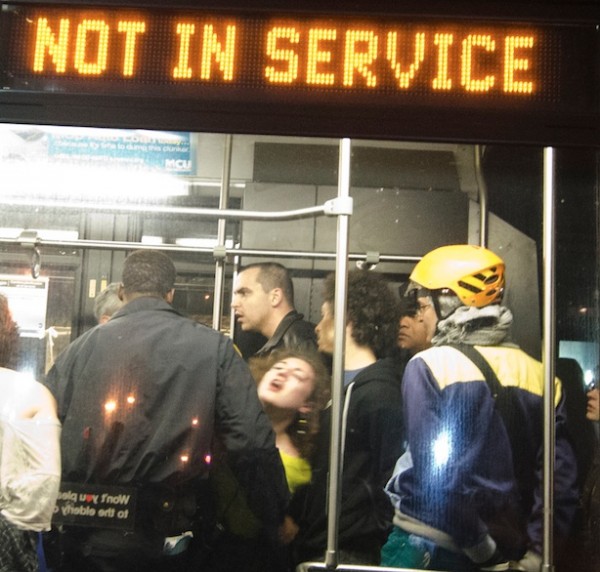
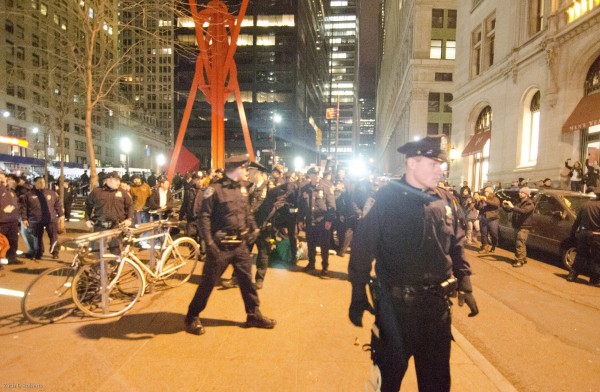
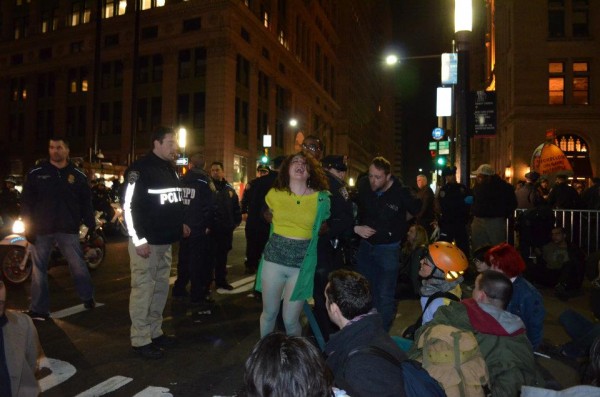
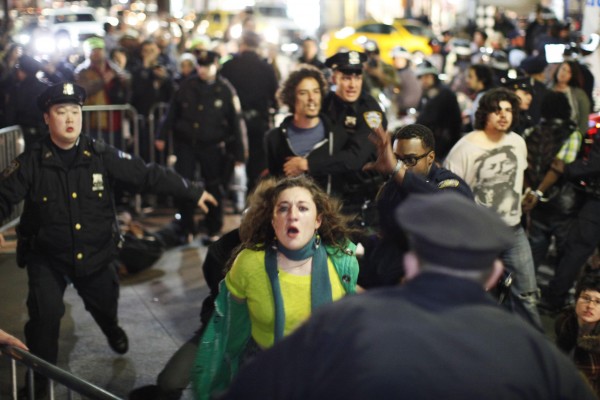
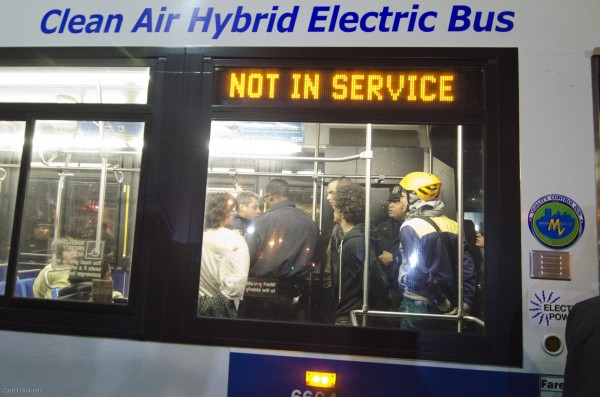
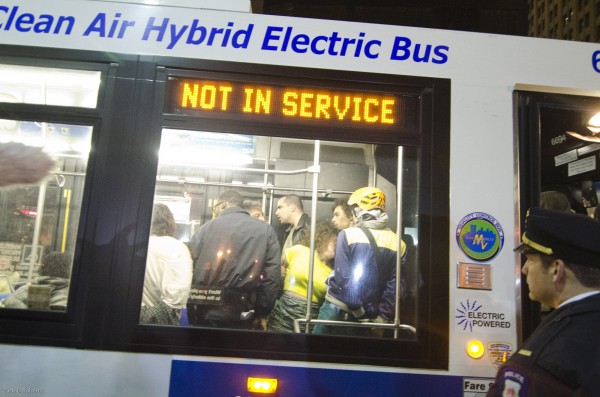
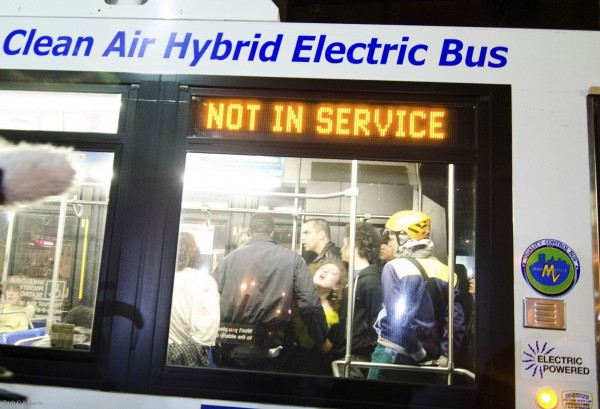
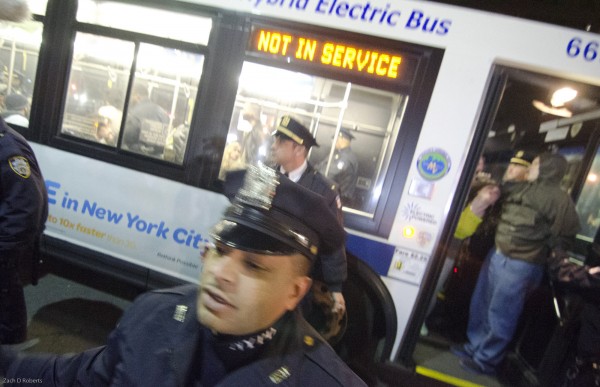
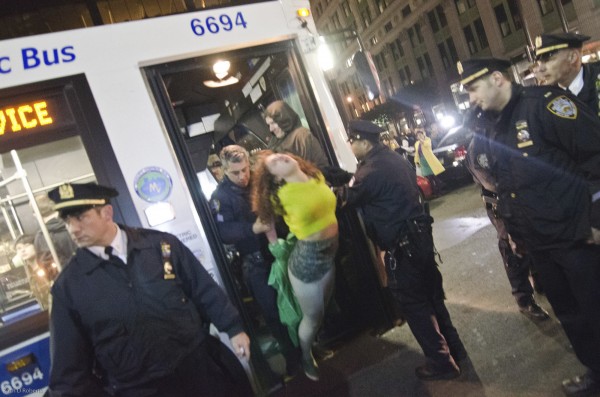
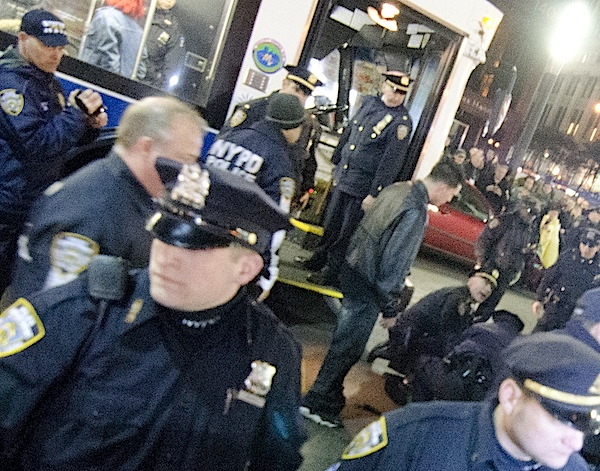
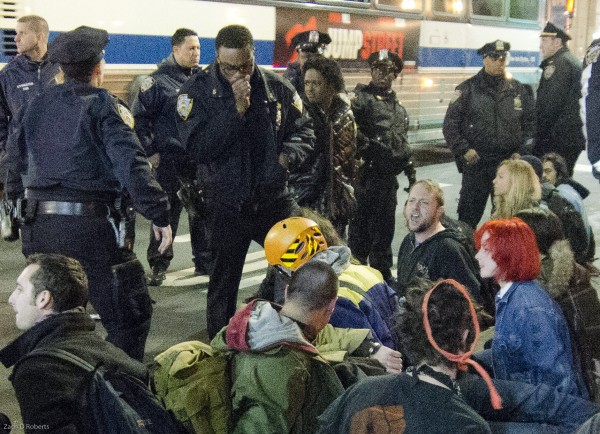
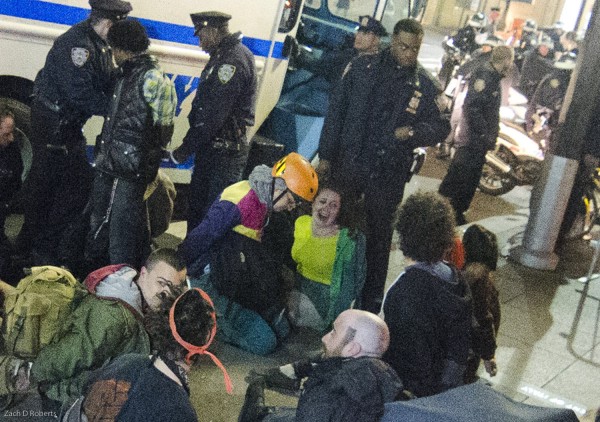
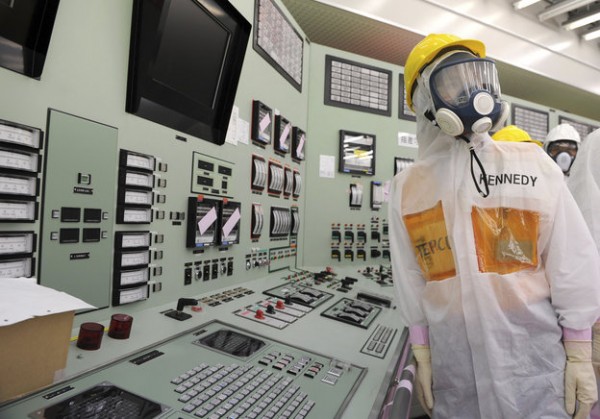
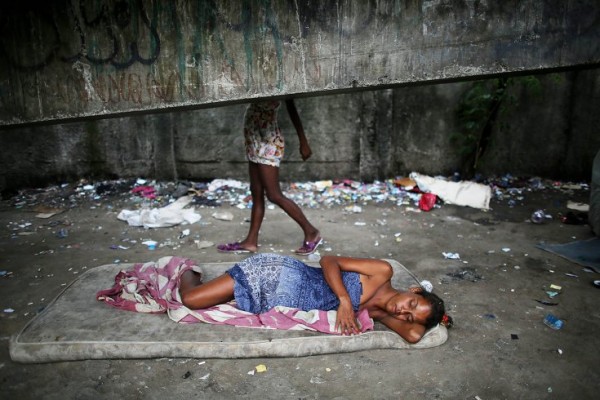
Reactions
Comments Powered by Disqus